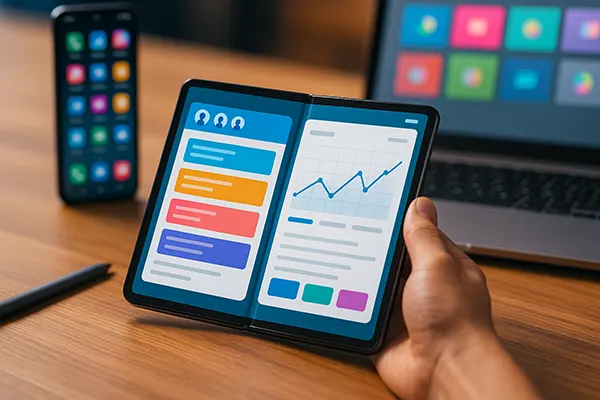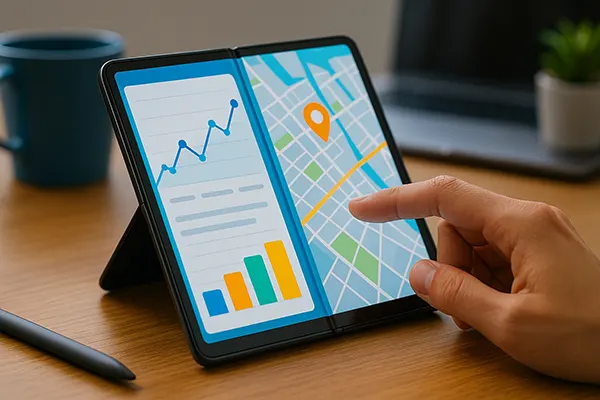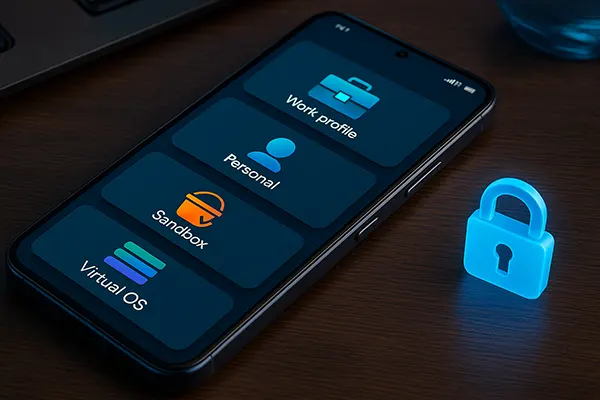App Development for Foldable Smartphones: Challenges and Opportunities

The rise of foldable smartphones has introduced a new era in mobile technology. Devices like the Samsung Galaxy Z Fold series, Google Pixel Fold, and Huawei Mate X are redefining how users interact with their screens. However, this innovation also brings unique challenges for developers who must adapt applications to work flawlessly on variable screen sizes, dynamic layouts, and complex folding mechanisms.
Understanding the Technical Challenges of Foldable Devices
Foldable smartphones introduce significant complexity in terms of software behaviour. Developers must account for different states of the device—folded, half-opened, and fully extended. Each configuration changes the user interface (UI) and user experience (UX), requiring flexible and responsive design frameworks. Applications need to dynamically adapt layouts and maintain functionality across transitions without glitches or data loss.
One major challenge involves the handling of multiple screen ratios. Traditional UI frameworks were built for static rectangular screens, but foldables demand a system capable of redrawing components instantly as the display expands or contracts. Google has introduced tools such as Jetpack WindowManager for Android, which helps detect hinge positions and adjust the UI accordingly.
Another issue is multitasking and continuity. Users expect to begin an activity on the outer screen and continue seamlessly when unfolding the device. This requires careful management of activity lifecycles, memory allocation, and screen context. Without proper configuration, applications may crash or reset upon transition, damaging the user’s experience.
Performance, Energy Efficiency, and User Experience
Performance optimisation becomes crucial in foldable device applications. Dual displays and higher refresh rates increase power consumption, pushing developers to refine resource management. Efficient code execution and battery optimisation are essential to maintain performance while extending battery life. For instance, developers often use dynamic resource allocation and limit background processes to enhance efficiency.
Another concern is hardware variation among manufacturers. Foldables come in different sizes, hinge types, and resolutions, leading to inconsistencies in screen rendering. Developers must test across multiple devices or use emulators to ensure compatibility and visual stability. Consistent frame rates and smooth animations are vital for maintaining a premium user experience.
User experience design (UXD) also takes on a new dimension. Foldable devices allow creative multitasking scenarios, such as running two apps side-by-side or extending media playback across screens. Designing intuitive transitions and gestures enhances usability and sets high-quality apps apart from the rest of the market.
Opportunities for Innovation and Market Expansion
The challenges of foldable devices are balanced by significant opportunities. As more users adopt these devices, the market for optimised applications continues to grow. Businesses can gain a competitive edge by delivering foldable-friendly apps that enhance productivity, entertainment, or accessibility through innovative use of flexible screens.
In particular, gaming and streaming applications can take advantage of larger display areas to offer immersive experiences. Foldable smartphones effectively combine the portability of a phone with the screen real estate of a tablet. This opens doors for advanced gameplay interfaces, split-screen control systems, and enhanced visual storytelling.
Corporate and educational apps can also benefit. Productivity tools like spreadsheets, digital whiteboards, and presentation software can now use dual-panel layouts for simultaneous viewing and editing. These improvements make foldables an attractive solution for professionals seeking mobile workstations.
Emerging Technologies Supporting Foldable App Development
Several emerging technologies support the adaptation to foldable devices. Progressive Web Apps (PWAs) can deliver flexible user interfaces that automatically adjust to screen changes. Combined with responsive design principles and scalable vector graphics, PWAs ensure consistent performance across devices and orientations.
Artificial intelligence (AI) and machine learning (ML) play a growing role as well. They help predict user behaviour and optimise app layouts in real time. For example, an AI engine can detect whether the user prefers to fold the device halfway for video playback or reading, and adjust the interface accordingly.
Cloud-based testing environments are another advancement enabling developers to simulate real-device conditions for foldables. Platforms such as Firebase Test Lab now support virtual foldable devices, allowing developers to identify bugs and optimise performance without needing multiple physical units.

Best Practices for Developers in 2025
To ensure successful adaptation, developers must follow modern best practices. First, they should integrate APIs such as Jetpack WindowManager and Android’s ConstraintLayout 2.1 to handle flexible layouts. Responsive design frameworks and modular components ensure stability and consistency across fold states.
Testing remains a key element of quality assurance. Emulators alone are insufficient, so developers should test on real devices whenever possible. This helps uncover hinge-related issues, UI stretching, and hardware-specific bugs that virtual environments may not replicate accurately.
Finally, developers must focus on accessibility and user inclusivity. Foldable smartphones attract a wide demographic of users, from business professionals to tech enthusiasts. Providing adaptable font sizes, clear icons, and gesture-based navigation ensures that applications remain easy to use regardless of how the device is folded.
The Future of Foldable App Ecosystems
Looking ahead, foldable smartphones are expected to move beyond flagship devices and enter mid-range markets by 2026. This expansion will drive higher app demand and push developers toward greater optimisation. Foldable technology could also inspire hybrid devices bridging the gap between smartphones, tablets, and even laptops.
Collaborations between hardware manufacturers and software developers will be vital. Industry standards for hinge detection, screen continuity, and resource management will likely evolve, allowing more streamlined development processes. This cooperation will shape the long-term success of foldable ecosystems.
Ultimately, developers who embrace the complexity of foldable devices today position themselves at the forefront of the next generation of mobile innovation. By mastering adaptive design and leveraging new tools, they can create versatile, future-ready applications that define mobile computing in 2025 and beyond.




